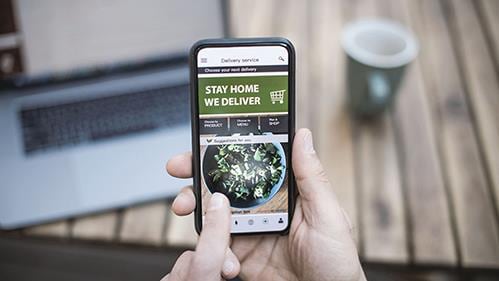The mobility needs of corporate customers have always been more complex than those of private drivers. This complexity has sparked the emergence of an equally sophisticated mobility payments ecosystem, incorporating fuel and energy cards, financial solutions, and mobility services. Players offer bundles of services as well as more niche participants with targeted offerings around, for example, fuel cards, toll on-board units (OBUs), and workflows.
Our new report, Business mobility payments: On the road to change, lays out the anticipated impact of five major trends: powertrain technology is evolving; electric and digital infrastructure is becoming mainstream; workflows and processes are being digitalized; B2B payment experiences are shifting; and payment technology is becoming instant and device-agnostic.
The report also details four phases of reflection and adaptation that can help payment providers in the mobility space to prepare for the upcoming changes. A link to the full document appears at the end of this summary.
The current payment ecosystem in the B2B mobility sector
How payments are made and received is changing in the mobility industry. Fleet managers, taxis, car-sharing services, and truckers are embracing digital and are demanding more from the companies that provide their payment infrastructure—for example, digital now touches multiple aspects of a truck driver’s journey.
This report focuses on B2B mobility providers, who operate as part of a complex ecosystem encompassing five broad types of service providers, each with a different value proposition: independent mobility and payment providers, major oil and gas and electricity providers, specialized players, mobility providers, and payment service providers.
Would you like to learn more about the McKinsey Center for Future Mobility?
Overall, the B2B mobility payments market in Europe is expected to experience particularly strong revenue growth in the next few years, reaching a market size of €11 billion to €13 billion by 20251 across three principal segments: B2B mobility and financial solutions, toll payments, and fuel and energy cards.
Five trends will shape B2B mobility payments by 2030
Five major trends will play out across the mobile payment ecosystem over the coming years. The timing and magnitude of the effects of these changes will vary (exhibit), but the combined impact will mean significant shifts for B2B mobility payments. Additionally, regulations will continue to evolve and play a significant role in shaping the ecosystem.

1. Powertrain is evolving in both commercial vehicles and fleets
Rapidly evolving technology has turned electric vehicles (EVs) into a convenient and more environmentally friendly mode of transportation, leading to a boom in EV sales in recent years: global sales increased 79 percent to 5.1 million vehicles in 2021, according to McKinsey analysis. Although EV adoption started with passenger cars, penetration is now starting to add share in the light commercial vehicle (LCV) and commercial road transport (CRT) segments, where EV trucks of all sizes are increasingly used for last-mile delivery.
2. Infrastructure goes electric and digital
Infrastructure, such as gas stations and toll booths, is becoming ever more critical—and coming under increasing strain—due to the growing number of vehicles on the roads. However, EV uptake means that the focus on investment is shifting swiftly toward charging stations, which is more varied infrastructure than traditional fueling.
Another trend in infrastructure investment is tolling and telematics. Increasing supply chain complexity has led to a step change in the need for telematics software. Shipment professionals are making significant investments to increase transparency around their fleets, and satellite tracking allows them to obtain real-time information about any vehicle—even in remote or badly connected areas.
3. Workflows and processes are being digitalized
Increasingly, truck and fleet users are seizing the opportunity to digitalize internal workflows, and the COVID-19 pandemic accelerated this trend. Digitalization and expanded gathering and use of data can increase efficiency, reduce costs, and unlock additional customer service opportunities.
As businesses become fully digitalized and amass data, they can generate value by rethinking several processes—for example, by optimizing processes in delivery and loading and in fleet and route management.
4. Retail payment experiences drive B2B payment experiences
Customers’ personal payment experiences have changed markedly in recent years, with payment services such as those provided by PayPal and Apple Pay now seen as more secure and convenient. B2B customers expect a similar level of service in their day-to-day activities, and digital payments are just the beginning. Increasingly, technology and growing data availability will enable the industry to provide new payment methods and expanded services that offer the ability to buy now and pay later, lend, or even offer credit.
5. Payment technology is becoming instant and device-agnostic
B2B customers want a seamless and integrated payment experience across various devices, just as they have in the B2C space. As such, pay-at-the-pump and digital wallets are increasingly hot topics in the B2B world. Digital wallets are also on the rise and are no longer exclusively tied to smartphones; vehicles themselves can now be digital wallets.
Regulation will continue to shape the ecosystem
Government regulations determine many aspects of payment developments in the B2B mobility market. Regulations surrounding payments in general and niches such as tolls and EVs could probably facilitate and accelerate the aforementioned trends.
In examining these various trends, it is clear that there will be fundamental shifts in the payment ecosystem for mobility players. However, these will generally be medium-to long-term shifts. This relatively gradual transition offers incumbents breathing room, though they will still need to act quickly to endure—and even thrive within—the upcoming changes.
How to win in B2B mobility payments
As we have seen, trends in the B2B mobility payments sector will change how corporations drive and pay by 2030. As a result, we estimate that new opportunities will account for about 30 percent of total future revenue pools, driven by alternative powertrains and new sources.2

Mobility's rebound: An industry recovers, but where is it heading?
To tap into these new revenue pools, players would be well advised to work through four phases of reflection and adaptation. First, they can identify what is likely to be needed in the future ecosystem and decide what role they wish to play. Second, they can prepare themselves to take advantage of the upcoming changes—especially alternative powertrains, digitalization, and the increasing use of big data. Third, they can consider how to introduce new revenue sources, even if this means changing their current business model. Finally, generalist payment companies, automotive players, and start-ups should also consider entering the market.
Overall, the B2B payment mobility sector is likely to grow significantly in the coming years. However, the sector will have to contend with many of the major trends reshaping the global economy, including technology and digitalization, the growing importance of environmental issues, and a variety of sector-specific shifts. While the brunt of the impact is not likely to be felt before 2025, the companies that win in this emerging ecosystem will be those that act swiftly and decisively by understanding forthcoming shifts and adapting accordingly.
Download the full report here.


